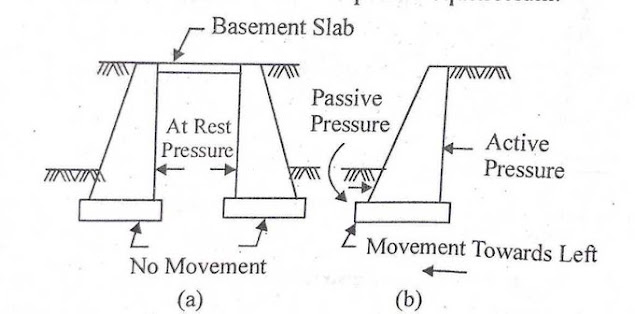Earth Pressures
Earth pressures can be grouped into 3 categories, depending upon the movement of the retaining wall with respect to the soil retained. The soil retained IS also known as the backfill.
At-rest Pressure
The lateral earth pressure is called at-rest pressure when the soil mass is not subjected to any lateral yielding or movement. This case occurs when the retaining wall is firmly fixed at its top and is not allowed to rotate or move laterally. The figure (a) shows the basement retaining walls .which are restrained against the movement by the basement slab provided at their tops. Another example of at-rest pressure is that of a bridge abutment wall which is restrained at its top by the bridge slab. The at-rest condition is also known as the elastic equilibrium, as no part of soil mass has failed and attained the plastic equilibrium.
Active Pressure
A state of active pressure occurs when the soil mass yields in such a way that it tends to stretch horizontally. It is a state of plastic equilibrium because the entire soil mass is on the verge of failure.
A retaining wall when moves away from the backfill, there is a stretching of the soil mass and the active state of earth pressure exists. Figure (b) shows the active pressure develops on the right-hand side when the wall moves towards the left.
